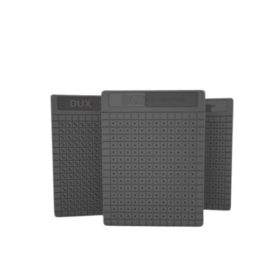Encontre o que precisa com preço baixo, pagamento facilitado no Cartão, Pix ou Bitcoin | Financie em até 48x | (62) 3999-1263 - (62) 99497-9204
Mastering Real-Time Data Integration for Live Personalization in Email Campaigns
Implementing real-time data updates is a critical step toward achieving dynamic, contextually relevant email personalization. Unlike static segmentation or pre-defined content blocks, real-time personalization reacts instantly to user actions and environment changes, significantly boosting engagement and conversion rates. This guide provides a comprehensive, step-by-step approach to setting up, managing, and troubleshooting live data feeds for email campaigns, transforming your outreach into a highly responsive communication channel.
1. Setting Up Event-Triggered Campaigns: Capturing User Actions as Data Events
The foundation of real-time personalization is capturing meaningful user interactions—website visits, app usage, cart actions, or search queries—and translating these into data events that can trigger tailored email content. To do this effectively, you must define a comprehensive list of event types aligned with your marketing goals. For example, when a user adds a product to their cart, this event should be captured immediately to trigger a cart abandonment email with personalized product recommendations.
Practical Steps:
- Identify Key Events: List critical user actions, such as page visits, product views, cart additions, or search queries.
- Implement Tracking Pixels and SDKs: Use JavaScript-based tracking pixels for websites and SDKs for mobile apps to capture these actions in real-time.
- Define Event Data Schema: Standardize the data payloads (e.g., user ID, timestamp, product ID, session info) to ensure consistency across systems.
- Store Events in a Streaming Data Platform: Push captured events into real-time data pipelines like Kafka, AWS Kinesis, or Google Pub/Sub for immediate processing.
2. Integrating APIs for Live Data Feeds into Email Content
Once user actions are captured as events, the next step involves integrating these data streams into your email system. This requires establishing API endpoints that can receive, process, and deliver live data to your email templates. A common approach is to set up a dedicated API that your email platform queries at send time or during rendering, fetching the latest user-specific data for personalization. Real-time APIs often leverage REST or GraphQL protocols, optimized for low latency and high availability.
Implementation Checklist:
- Design API Endpoints: Create endpoints that accept user identifiers and return relevant data (e.g., recent browsing history, current cart contents).
- Optimize for Latency: Use caching layers (Redis, Memcached) and CDN edge nodes to minimize response times.
- Secure Data Transmission: Implement OAuth, API keys, or JWT tokens to authenticate requests.
- Integrate with Email Platform: Configure your email service provider (ESP) to call APIs during email rendering or via webhook triggers, ensuring dynamic content is injected seamlessly.
3. Handling Data Latency and Synchronization Challenges
Real-time data integration is powerful but fraught with potential issues, especially latency and data inconsistency. To mitigate these challenges, adopt a multi-layered approach:
| Challenge | Solution |
|---|---|
| Data Latency | Implement edge caching and pre-fetching strategies; set acceptable latency thresholds; prioritize critical data streams. |
| Data Inconsistency | Use versioning and timestamps; apply conflict resolution rules; employ eventual consistency models where appropriate. |
| Synchronization Failures | Implement retries with exponential backoff; log failures for manual review; set fail-safe fallback content. |
Advanced Tips:
- Use message queues to buffer data updates and smooth out bursts.
- Apply data validation rules before injecting data into email templates.
- Monitor API response times and error rates continuously to detect bottlenecks.
4. Practical Example: Personalized Offers Based on Recent Browsing
Consider an e-commerce retailer aiming to send personalized product offers immediately after a user browses specific categories. The process involves:
- Event Capture: User visits a product page; a pixel fires, sending data to your event stream.
- Data Processing: Your API fetches the latest browsing data, including category IDs and timestamps.
- Email Triggering: An API call during email rendering dynamically inserts a curated product list matching the viewed category.
- Delivery: The email reaches the user with real-time tailored recommendations, significantly increasing relevance.
“Real-time personalization transforms static email campaigns into dynamic conversations, but success hinges on meticulous data pipeline design and proactive troubleshooting.” — Expert Insight
Conclusion: Building a Robust Real-Time Personalization Framework
Achieving live personalization in email campaigns is an intricate but immensely rewarding process. It requires a deep technical understanding of data pipelines, API integrations, and synchronization strategies. By meticulously capturing user events, integrating fast and secure APIs, managing latency, and continuously optimizing your data flows, you can deliver hyper-relevant content that elevates your engagement metrics and customer experience. Remember, the foundation of this process is rooted in a solid understanding of your data architecture—consider revisiting {tier1_anchor} for a comprehensive baseline.
Continually refine your approach by monitoring API performance, user feedback, and engagement metrics. Embrace automation and advanced data management tools to stay ahead in delivering truly personalized, real-time email experiences. This mastery will position your brand as a leader in customer-centric marketing, leveraging data at the velocity of user interactions.




